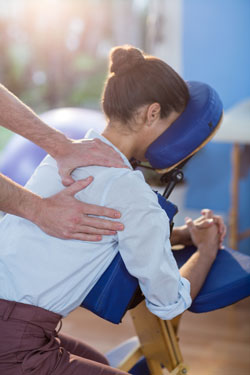 In our fast-paced world, it’s no surprise that we often see patients dealing with the repercussions of poor posture and stress on their upper backs. This can all lead to mobility problems, especially in the upper spine.
In our fast-paced world, it’s no surprise that we often see patients dealing with the repercussions of poor posture and stress on their upper backs. This can all lead to mobility problems, especially in the upper spine.
Let’s first dive into how range of motion in the upper back can diminish.
The Impact of Poor Posture
One of the chief contributors to upper back immobility is poor posture, a consequence of extended periods spent hunched over desks and screens. This often results in stiff necks and shoulders, triggering a chain reaction that affects the entire upper back.
The inability to achieve proper thoracic extension, synonymous with sitting up straight, can lead to headaches, shoulder tension, and hindered deep breathing. Moreover, if you’re stressed or anxious about the issue, the problem can be compounded.

The Solution: Chiropractic Techniques and Massage Therapy
By targeting the musculoskeletal elements of the problem through gentle adjustments and massage therapy, we aim to alleviate shoulder pressure, relieve headaches, and facilitate deeper, more rejuvenating breaths.
Practical Solutions for At-Home Relief
For those seeking at-home relief, incorporating stretching and supplementation is crucial. We’ve seen patients have improved results when they supplement with fish oils and flaxseed oils to address internal tightness.
Additionally, a simple yet effective solution involves using a standard foam roller, specifically the 36-inch variety. Placed parallel to the spine with the neck supported and the arms extended straight out to the sides, this technique enhances thoracic extension and overall mobility. Consistency is key; dedicating at least three to five minutes daily is necessary to realize the full benefits.
Ready to find out how massage and chiropractic could help you improve upper back mobility? We’d love to chat! Contact our practice today to book your appointment.
CONTACT US
